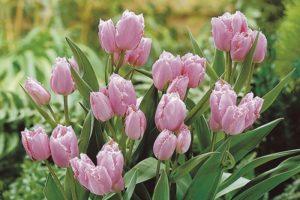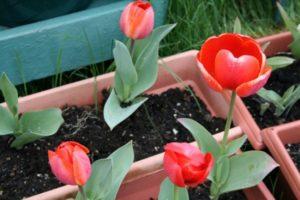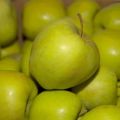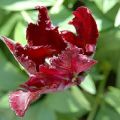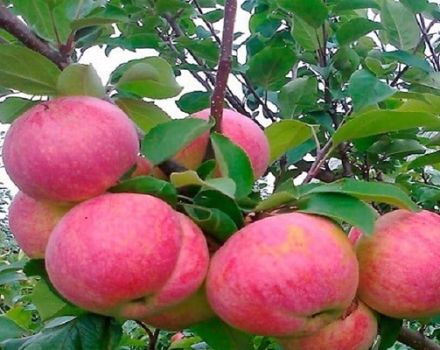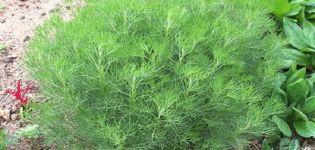Description and characteristics of the tulip variety Apeldoorn, planting and cultivation
The tulip is a popular spring plant that is in high demand for its vibrant appearance combined with its delicate scent. Among the large variety of varieties bred by breeders, the Apeldoorn, belonging to the "Darwin hybrids" and having large dimensions, compared to other tulips, has a special beauty. How to grow such flowers, and what is their advantage over other varieties, we will figure it out below.
General description and characteristics of the variety
The plant was born thanks to the efforts of the Dutch scientist and breeder Derek Lefebvre, after mixing two varieties of tulips - Darwin and Foster. Such varieties are collectively called "Darwin's hybrids".
Flowers grown as a result of the experiment have the following characteristics:
- the diameter of the bud is 10 centimeters;
- height - 70 centimeters;
- the bud is large, shaped like a glass;
- blooms in spring - early or mid-May;
- the color is bright red or bicolor, depending on the variety.
Pros and cons of tulip Apeldoorn
The pluses of the variety, according to gardeners from all over the world, include:
- good immunity;
- fertility of the variety;
- Apeldoorn is not picky about leaving;
- moderate frost resistance;
- appearance;
- delicate aroma.
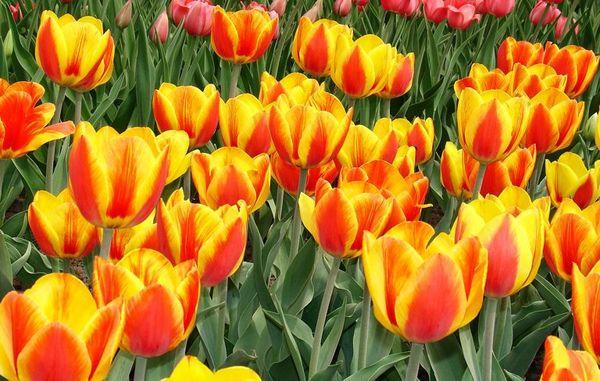
There is only one clear minus - in sunny weather they open up strongly, which spoils the overall visual impression. Otherwise, the plant is suitable for both novice gardeners and experienced citizens with large plots at their disposal. The tulip will always be in place, blending harmoniously with the surrounding landscape.
Popular varieties
The Apeldoorn tulip has varieties, each of which has its own characteristics. Of the bright hybrids, there are:
- Golden;
- Elite;
- Beauty of Apeldoorn;
- Blushing.
Let's consider each of them in more detail to understand how they differ from each other.

Golden
Differences in the variety that distinguish it from the rest:
- Coloring the petals.
Golden, with a yellowish tint. They look beautiful in large groups, giving the surroundings an elegant, festive look.
- Bud shape.
The bud has harmonious, smooth circles that stand out favorably against the background of other varieties.

Note! The sizes do not differ from other representatives. Golden Apeldoorn does not grow taller than 80 centimeters.
Elite
The variety is loved by florists for its bright saturated color of petals and large sizes.Each petal has a bright red center, which changes to yellow closer to the edge. When making bouquets, tulips of this particular variety are most often used. The buds are large, beautifully shaped.
Beauty about Apeldoorn
The dark yellow color of the bud towards the center is replaced by a rich orange color. The shape of the bud is usual, resembling a glass, the size is large. The variety is unpretentious, has good disease resistance.
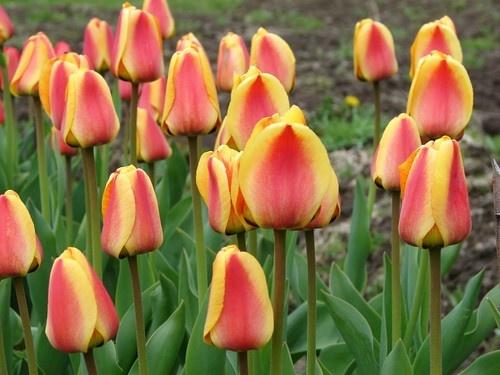
Blushing
It is considered a subspecies of Golden Apeldoorn and differs from it only in the color of the petals, which have a red border around the edges. The edging is not even, and it seems as if some artist took a red pencil and painted the plant. Flowering occurs in mid-May, early June. Disadvantages include strong bud opening in sunny weather, but some gardeners find it quite attractive.
Landing nuances
Despite the fact that tulips are unpretentious plants, certain rules should be followed when growing to get a stable harvest:
- Choose the right landing site.
- The bulbs to be sown must be properly prepared.
- Know the intricacies of planting bulbs in the ground.

If all actions are performed correctly, the harvest will not disappoint you, playing on the flower bed with rich, warm tones, giving you and those around you a positive mood.
Site selection and preparation
When choosing a site for a flower bed, be guided by the following criteria:
- the place should not be heavily blown by the wind;
- well lit from all sides;
- the area should not contain irregularities in which excess moisture will accumulate.
Note! With excessive soil moisture, the bulbs will rot and die.
The plant has no special preferences in terms of soil, but, if possible, choose areas with sandy loam and loamy compositions. They have a loose structure, quickly absorbing moisture.
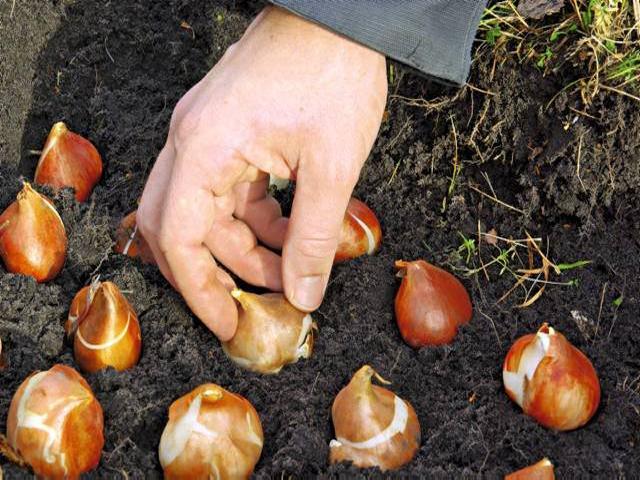
Preparing the bulbs for planting
Preparation of bulbs for planting is carried out as follows:
- we separate the daughter process from the main, maternal bulb;
- we clean it from the ground and give time to dry;
- as soon as the bulb has dried, we send it for 30 days to a place where the temperature does not exceed 20 about;
- after that we lower the storage temperature to 12 about... By the time of planting, they will not deteriorate, and will give good offspring.

How to plant a tulip Apeldoorn
For planting in the ground, a hole is dug with a depth of no more than 15 centimeters. The distance between the pits should not be less than 10 centimeters. One onion is lowered into each hole, after which they are covered with a layer of earth and watered.
If the winters in your area of residence are cold, mulch the soil above the flower bed, providing it with additional protection from frost.
Care features
Tulip is an unpretentious plant and, apart from abundant watering, requires nothing from the gardener. However, don't overdo it, or the bulbs will rot. Weeding and loosening the soil will guarantee abundant and powerful flowering. There is no particular preference for fertilizers, and a flower bed requires standard procedures to maintain the correct nutrient composition of the soil.

Preparing for winter
The plant tolerates winters well, but it is advisable to cover young shoots with spruce branches, and mulch the soil with peat. This will help the immature plant to survive severe frosts.
Diseases and pests
Among the diseases that tulips are prone to, there are:
- chlorosis - manifests itself due to a lack of boron, zinc or molybdenum;
- lack of magnesium causes the tips of the leaves to dry out;
- in the case when the leaves turn yellow, the plant lacks iron.
The rest of the variety is resistant to pests, has strong immunity.
